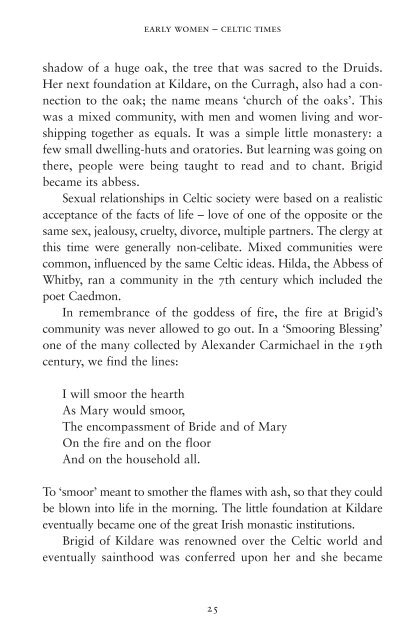Women of the Highlands by Katharine Stewart sampler
What was the crime of the last wich burnt in the Highlands? Which Jacobite lady led men to war while her Hanoverian husband stayed at home? Who were the first Highland women to be recorded in history? And how have wome's lives changed since medieval times? Katharine Stewart takes us to the heart of the Highlands in her history of the women who shaped this land and handed down the legends which have provided a rich vein of material for generations. From the women of the shielings to ladies at court, from bards to conservationists, authors to folk-singers, Women of the Highlands examines how the culture of the Highlands was created and passed down through the centuries, and how the tradition is continuing today.
What was the crime of the last wich burnt in the Highlands?
Which Jacobite lady led men to war while her Hanoverian husband stayed at home?
Who were the first Highland women to be recorded in history?
And how have wome's lives changed since medieval times?
Katharine Stewart takes us to the heart of the Highlands in her history of the women who shaped this land and handed down the legends which have provided a rich vein of material for generations. From the women of the shielings to ladies at court, from bards to conservationists, authors to folk-singers, Women of the Highlands examines how the culture of the Highlands was created and passed down through the centuries, and how the tradition is continuing today.
Create successful ePaper yourself
Turn your PDF publications into a flip-book with our unique Google optimized e-Paper software.
early women – celtic times<br />
shadow <strong>of</strong> a huge oak, <strong>the</strong> tree that was sacred to <strong>the</strong> Druids.<br />
Her next foundation at Kildare, on <strong>the</strong> Curragh, also had a connection<br />
to <strong>the</strong> oak; <strong>the</strong> name means ‘church <strong>of</strong> <strong>the</strong> oaks’. This<br />
was a mixed community, with men and women living and worshipping<br />
toge<strong>the</strong>r as equals. It was a simple little monastery: a<br />
few small dwelling-huts and oratories. But learning was going on<br />
<strong>the</strong>re, people were being taught to read and to chant. Brigid<br />
became its abbess.<br />
Sexual relationships in Celtic society were based on a realistic<br />
acceptance <strong>of</strong> <strong>the</strong> facts <strong>of</strong> life – love <strong>of</strong> one <strong>of</strong> <strong>the</strong> opposite or <strong>the</strong><br />
same sex, jealousy, cruelty, divorce, multiple partners. The clergy at<br />
this time were generally non-celibate. Mixed communities were<br />
common, influenced <strong>by</strong> <strong>the</strong> same Celtic ideas. Hilda, <strong>the</strong> Abbess <strong>of</strong><br />
Whit<strong>by</strong>, ran a community in <strong>the</strong> 7th century which included <strong>the</strong><br />
poet Caedmon.<br />
In remembrance <strong>of</strong> <strong>the</strong> goddess <strong>of</strong> fire, <strong>the</strong> fire at Brigid’s<br />
community was never allowed to go out. In a ‘Smooring Blessing’<br />
one <strong>of</strong> <strong>the</strong> many collected <strong>by</strong> Alexander Carmichael in <strong>the</strong> 19th<br />
century, we find <strong>the</strong> lines:<br />
I will smoor <strong>the</strong> hearth<br />
As Mary would smoor,<br />
The encompassment <strong>of</strong> Bride and <strong>of</strong> Mary<br />
On <strong>the</strong> fire and on <strong>the</strong> floor<br />
And on <strong>the</strong> household all.<br />
To ‘smoor’ meant to smo<strong>the</strong>r <strong>the</strong> flames with ash, so that <strong>the</strong>y could<br />
be blown into life in <strong>the</strong> morning. The little foundation at Kildare<br />
eventually became one <strong>of</strong> <strong>the</strong> great Irish monastic institutions.<br />
Brigid <strong>of</strong> Kildare was renowned over <strong>the</strong> Celtic world and<br />
eventually sainthood was conferred upon her and she became<br />
25


















